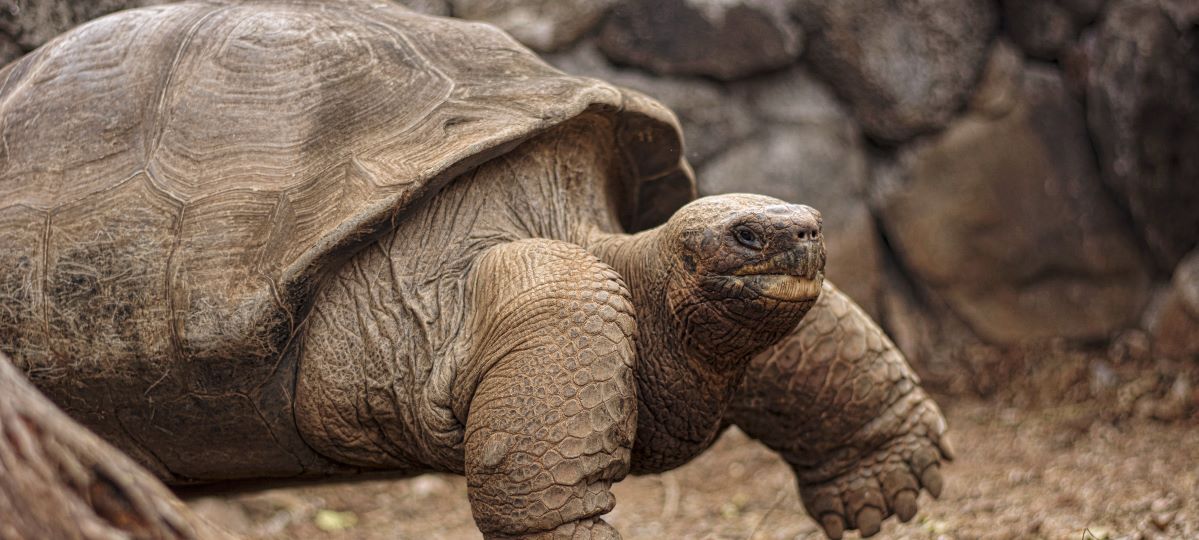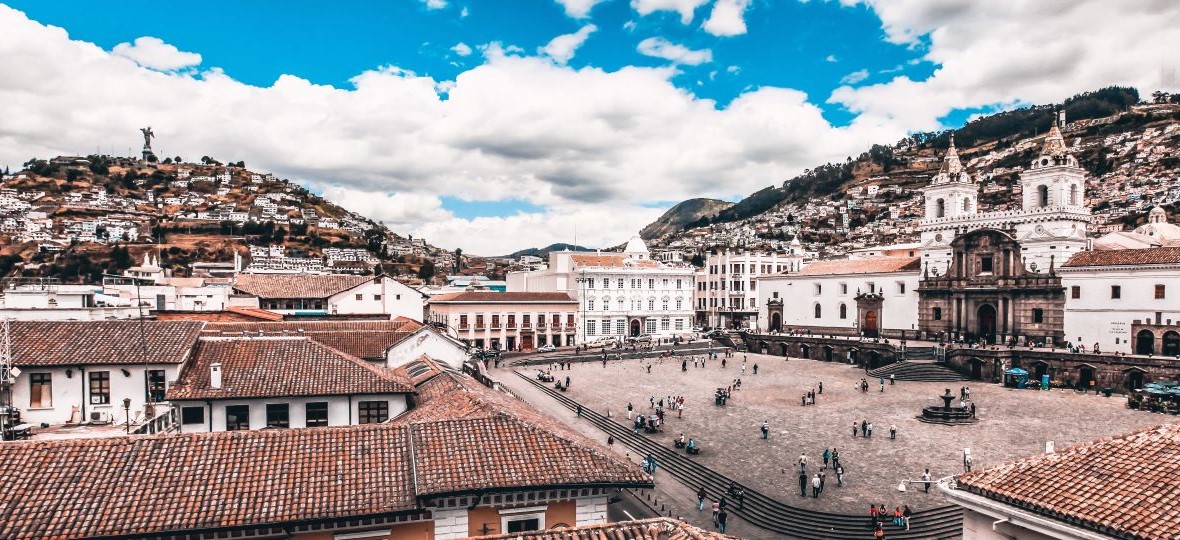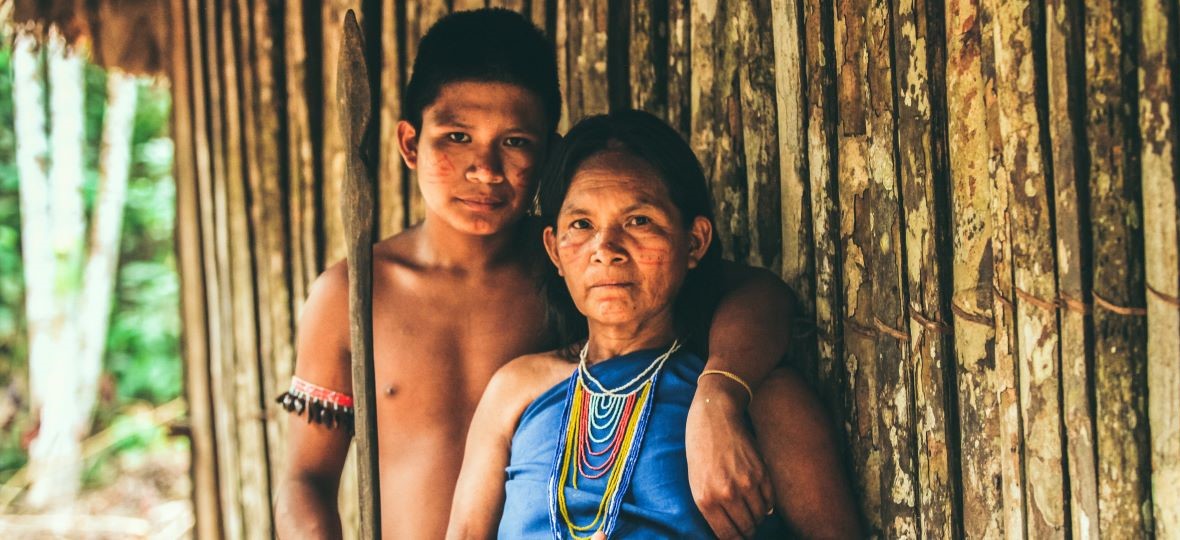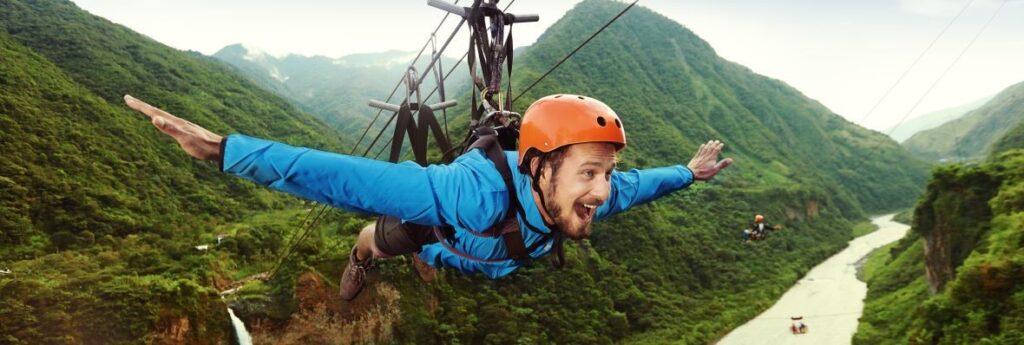From the jungles of the Amazon to the ecologically unique islands of the Galapagos in the Pacific, and the Andes mountains in between – not to mention the name-giving Equator running through it – Ecuador packs unprecedented diversity into its small frame. And that, says Goway Travel, makes it a wonderland for travellers, not least those drawn to adventure and the natural world.
Goway, which is currently shining a spotlight on Ecuador as part of an enhanced focus on its Latin American product line, touts the South American country as a year-round destination, with the company’s product manager for the Americas Robert Miller, stating, “Sitting along the equator, Ecuador is a wonderful destination to visit throughout the year. Whether clients are seeking an immersive trip filled with natural wonders, cultural activities or luxurious experiences, the country is known for its outstanding biodiversity; warm, welcoming locals; and refined hospitality.”
The Toronto-based tour company’s trips to Ecuador, conducted by local operator Condor Travel, are designed to offer a wide range of experiences and price points for travellers with all manner of interests and in a wide range of destinations across the country.
Measuring in at a bit smaller than Labrador or Nevada, and as the fourth smallest country in South America, Ecuador nevertheless is home to roughly 8% of the world’s amphibian species, 5% of reptile species, 8% of mammal species, and 16% of bird species – there are 140 different types of hummingbirds alone. There is more biodiversity than in Canada and the US combined.
And to accommodate it, Ecuador has 14 nature reserves, 11 national parks, a wildlife refuge, and several natural heritage sites. Altogether, the country protects over 466,000 hectares of land, while safeguarding 97% of the Galapagos Islands through its commitment to conservation.
Beyond its landscapes and biodiversity, the country offers a rich and diverse cultural heritage that blends indigenous traditions with Spanish colonial influences. Not surprisingly, the country is home to five UNESCO World Heritage sites and countless marvels that are a testament to the connection between Ecuador’s nature and culture.
Across the country, Ecuador weaves a tapestry of experiences, captivating cultural travellers with diverse offerings.
“Ecuador has ‘four worlds,’” enthuses Ecuador-based Jascivan Carvalho, Inbound Business Director for Condor Travel. “We have the Amazon rainforest, the cloud forest on the slopes of the Andes – a magical ecosystem – and we have the Avenue of the Volcanos and the high Andes; we have the Pacific coast and the Galapagos islands. And all are very, very different. I like to say Ecuador is a summary of South America. If you want to see South America, come to our place.”
So, where to wander in Ecuador?
The Galapagos Islands

Naturally. A UNESCO World Heritage site, the Galapagos are renowned for their exceptional biodiversity and conservation initiatives. Located about 1,000 km. from the mainaland, the archipelago is home to unique wildlife, including giant tortoises, blue-footed boobies, and marine iguanas. Travellers can engage in various eco-tours that allow for immersive experiences, such as hiking trails like the Sierra Negra Volcano on Isabela Island, where visitors can encounter the fascinating species that inspired Charles Darwin’s theory of evolution.
“When people start thinking about coming to Ecuador, you think about the Galapagos first,” says Condor’s Carvalho. “So, all of your adventure starts with building that dream trip to the Galapagos Islands: it’s on the bucket list of any person interested in nature.”
In the Galapagos, most of the land is designated as a national park, limiting human activity to just 3% of the islands’ area. The surrounding Galapagos Marine Reserve, one of the largest in the world, protects over 51, 000 sq. km. ocean, preserving the unique ecosystems for the future. Strict conservation measures ensure that the rich biodiversity and local communities are protected, with tourism carefully regulated to maintain ecological balance.
Island-hopping provides opportunities to explore the distinct landscapes and ecosystems of the archipelago, while participating in local conservation projects helps visitors understand the ongoing efforts to protect this fragile environment. Together, these activities allow travellers to appreciate and contribute to the preservation of one of the planet’s most biodiverse ecosystems.
For those interested in underwater exploration, snorkeling and scuba diving are essential activities in the crystal-clear waters of the Galapagos, offering encounters with sea turtles, sea lions, and various shark species.
Quito

Colonial Quito is often considered South America’s prettiest capital. It is also the second highest (after La Paz, Bolivia) and visitors will notice the difference through mild shortness of breath.
While surrounded by 18 volcanoes – some active – the city’s main drawing card is its UNESCO-recognized Old Town, which boasts 21 churches in its one square kilometre. Highlights include Independence Square, the San Francisco Church and Monastery, and the ornate Baroque Church of La Compañía, featuring more than 100 works of art by local artists, plus a number of colourful markets.
“Thirty years ago, you wouldn’t go to the old town of Quito,” Carvalho observes. “Now you have all these amazing boutique hotels, microbreweries, chocolate tasting experiences, museums, and the beautiful plaza and churches and the story of the Spanish people that came…”
To travel advisors, he says, “Any Ecuador adventure begins and ends in Quito and then goes to the Galapagos – and then hopefully (clients) explore further.”
Andes

In the Andes mountains, Cotopaxi National Park is home to one of the world’s highest active volcanoes at nearly 6,000 metres. Visitors are drawn to stunning views of the Avenue of Volcanoes and diverse ecosystems, which include humid mountain (cloud) forests and the unique páramo landscape, characterized by high-altitude grasses and shrubs. The park offers a variety of thrilling activities such as responsible hiking, mountaineering, mountain biking, and horseback riding, catering to adventure enthusiasts while emphasizing environmental preservation.
“There is a lot to do in the Andes,” Carvalho offers. “In the north part of Ecuador you have Otavalo, very famous for its indigenous market and some say the biggest in South America – it’s very authentic fun. We (Condor) like to go behind the scenes in Otavalo to meet the local artisans. So, it’s fun to go to the market for sure and buy your souvenirs, but we try to go a little bit beyond, like a cooking class with a local family and learning about the Andes gastronomy. We also do weaving workshops – with the last weavers who are still doing their craft by hand. So, the beauty of the north is the cultural aspect.
“But when you go only 90 minutes south of Quito, you are in front of the highest active volcano in the world – Cotapaxi – and Cotapaxi National Park, another well-protected national park, and the second most visited national park in Ecuador after the Galapagos. And the fact that nobody is there is amazing. It’s heavily visited, but it’s so vast that you can barely notice that people are around you. So, it’s an amazing combination of a culture experience in Otavalo, and then you come south and have this beautiful natural experience in front of this snow-capped volcano. It’s wide open and beautiful.”
And then there are cloud forest on thee slopes of the Andes you – a feature Carvalho considers “the best-kept secret that we have. All the heat coming from the lowlands and the Amazon and Pacific coast meets the cold weather of the Andes and that exchange of temperature creates this very unique ecosystem, which is a birder’s paradise with one the biggest densities of bird species, including hummingbirds, in these areas. And we have these beautiful lodges to facilitate for wildlife photographers and birders of the world to come and see.”
Carvalho says visiting Otavalo, Cotapaxi, and cloud forest is doable on a daytrip from Quito, but he recommends spending a night in each of the very different areas around the capital.
Amazonia

Less well known than the Galapagos – at least in Ecuador – is the Amazon rainforest, which is more typically associated with Brazil. But Carvalho notes, “Our Amazon rainforest is probably the most accessible Amazon rainforest in the region. A 25-minute flight and you are at the getaway to the (10,000-sq.-km) Yasuni National Park, one of the most diverse places in the world…
“The funny thing,” he observes, “is when you go to the Amazon it’s a zillion times more diverse than the Galapagos. And the thing is, instead of you watching the wildlife, they are watching you – because the Amazon is so big and so intense that in an Amazon adventure everything is alive and its magical.”
Of course, he continues: “The Amazon is also the home to (indigenous) people in remote communities, which is a component of the magic. There is nothing like experiencing the wilderness of the Amazon through the eyes of the locals with all of their beliefs and use of medicinal plants. It makes this a very unique and special adventure.”
As for the best way to experience the Amazon, Carvalho says, “So, you have high-end cruise-stay adventures, which I think is fantastic way to explore further into the Napo River and visiting different communities and seeing highlights like watching birds and paddling with locals; it’s more of an expedition. The beauty of a lodge base is that you can explore and every few steps you are seeing a zillion things – especially on a night walk. A lodge base I think is for those who want to go deeper into the details…”
Safety and security
Ecuador made international news early last year with reports of gang-related violence, prompting some countries to issue cautions over visiting. Carvalho says, “We don’t deny that there is a safety situation going on… But I wouldn’t say it’s a country issue, it’s a regional issue related to exports of illegal drugs.”
But he quickly adds that the problems are on found in very specific areas along the coast of Ecuador and the suburbs of Guayaquil (the main port) – areas that generally aren’t on the tourist map. “It doesn’t happen in the Andes, or the Amazon, or the Galapagos, so we’re basically advising our clients that its not a good idea to explore the Pacific coast.”
He notes, “We have to be respectful of what’s being said, and we want to be realistic about the facts, but the truth is, we’ve been operating non-stop since January, 2024 (when the issues came to light) and we’ve been sending people across the Andes and birdwatching in the Cloud Forest and in the Amazon with no problems whatsoever.
“We’re travelling all the time; we’re hosting FAM trips with our partners from abroad and we want them to see that its perfectly safe. Obviously, we know where to go and where not to go. We are your eyes and hands on the ground for that reason.”
Hidden treasures
Carvalho accepts that most people visiting Ecuador think first of the Galapagos, and he acknowledges that Ecuador’s tourism industry traded on that popularity. But he’s quick to point out: “It is really (all of) Ecuador that has all these eco-systems… Ecuador is a mega-diverse small country with an amount of richness of nature that you won’t find anywhere else. (And) the mainland has so many hidden treasures and it’s a perfect compliment to what the naturalist experience is all about.”
Not to be discounted, he adds, “Ecuador is a hidden gem that is less travelled. Everything feels very authentic, and we don’t have that sense of overtourism that now is prevalent in Europe. The Andes, the Amazon, the cloud forest of Ecuador, these are places that you feel you are discovering yourself for the first time. Obviously, the Galapagos is a very known destination, but the local authorities and conservation authorities have made a huge effort not to create the congestion that the islands could have.”
He concludes of Ecuador, “I believe that this ‘summary of South America’ is a place to fuel your discovery for the first time, a less-travelled area, and I encourage everyone to come and meet us and share some of the stuff that we’ve been doing for the last 30 years there.”
For more information on Goway’s Ecuador and its loyalty program for travel advisors, visit https://www.gowaypro.com/ and https://www.gowaypro.com/gowaypro/ .

